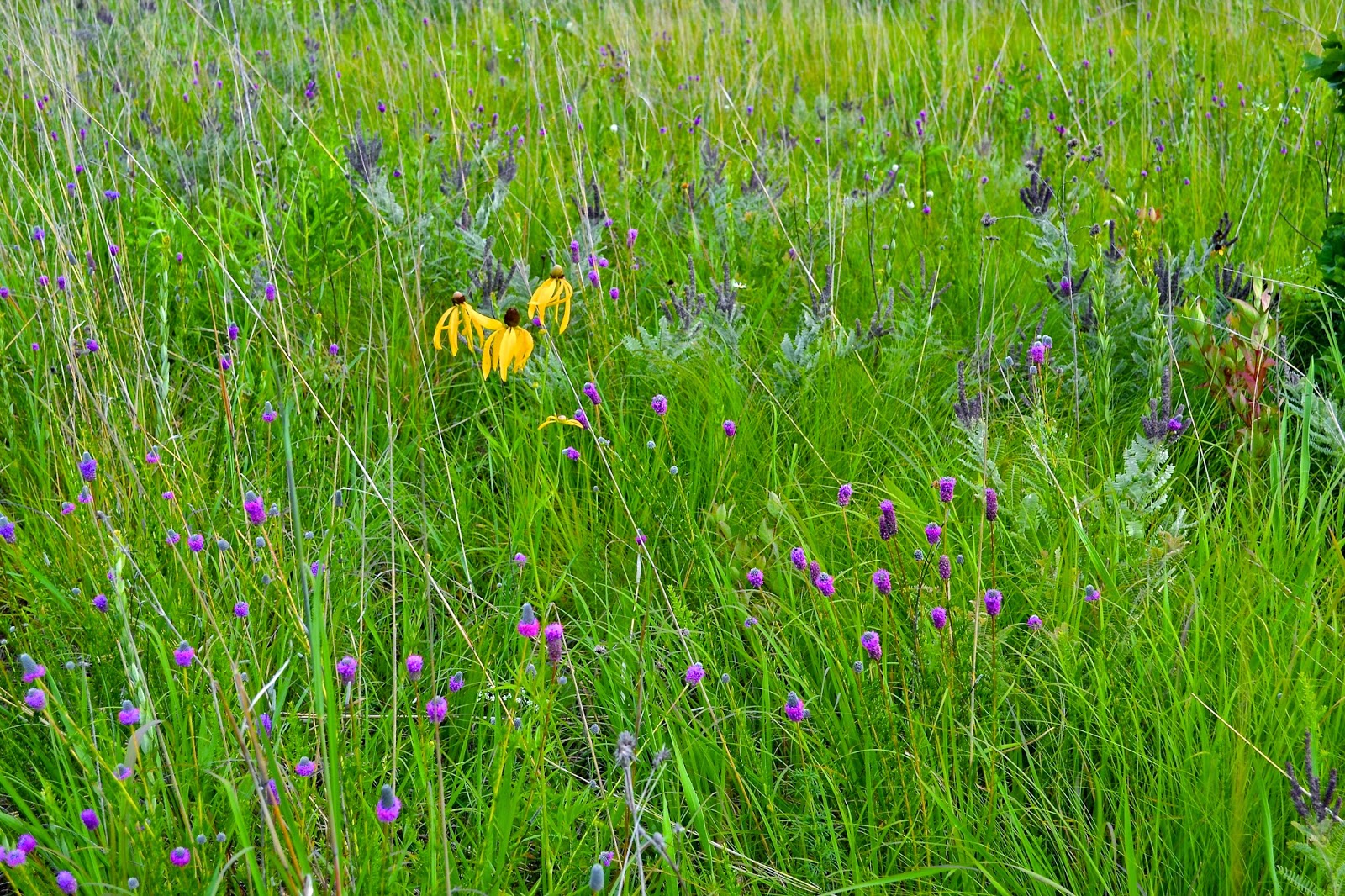Nine photos of restored savanna and woodland
at Somme Prairie Grove
July 2014
followed by thoughts on what they mean to conservation.
Elderberry (white flowers, above) is a shrub that meets the needs of birds, wine-makers, jelly-cookers, photographers ... it's a great shrub. Most of our shrubs and small trees burn off with every prescribed burn. One of our challenges at Somme is managing, despite frequent fire, to keep the thriving patches of shrubs that birds need for nesting and foraging.
Shade in mid-day. Ninety degrees. Like people, many animals need to move in and out of shade to regulate our (and their) temperatures. Flowers in bloom here: starry campion, woodland sunflower, and purple Joe-pye-weed.
Carolina rose and prairie sundrops both have seeds that are difficult to separate for efficient planting. But just get a few going, and they'll spread splendidly by themselves.
Amid purple prairie clover and leadplant, the fine leaves of grass that arc horizontally are prairie dropseed. It's the dominant grass of our finest black-soil prairies.
Even rarer than the purple is white prairie clover. Note how much wider its leaves are. It can grow in somewhat wetter and shadier habitats.
The lonely yellow bloom here is a "prairie" or "yellow" coneflower. Twenty years ago such coneflowers waved in all our open areas by the thousands. But they don't compete well with such conservatives (above) as dropseed, lead plant, silphiums, and white and purple prairie clover. Look for them in young restorations - or around animal burrows.
The lonely yellow bloom here is a "prairie" or "yellow" coneflower. Twenty years ago such coneflowers waved in all our open areas by the thousands. But they don't compete well with such conservatives (above) as dropseed, lead plant, silphiums, and white and purple prairie clover. Look for them in young restorations - or around animal burrows.
Still mostly buds here, the coming of the cardinal flower makes us already wistful. The richness of early summer is soon behind us. The richness of late summer approaches. Cardinal flower will attract daredevil hummingbirds through August and September. Soon to bloom: the tall grasses, blazing stars, asters, sunflowers. Golly.
Your “Comments” and discussion are always appreciated by this blog.
There’s a different treatment of these same photos at http://woodsandprairie.blogspot.com
where they’re described from a more technical, restoration perspective. Check out that blog too? Find "Nine Ideas - July 2014" and see which you find more interesting?







